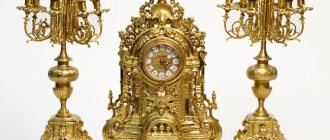Description of the slides.
Labor training lesson. 3rd grade (program by N. A. Tsirulik)
Topic: “Working with paper. Stained glass."
Slide 2.
Stained glass
is a narrative or ornamental decorative composition made from fragments of glass or other similar material that is capable of transmitting light. Pieces of glass in a stained glass window are separated by a metal stretcher.
Slide 3.
WITH
The word “stained glass” comes from the French vitre (window glass) and took its place in the Russian language by the first third of the 20th century. This is the name given to translucent glass paintings, usually made using the technique of classic lead-soldered stained glass, i.e., assembled from pieces of glass bound in lead.
Slide 4 - 6.
Stained glass can be mounted in a window, door, partition, or presented as an independent panel. In window openings, stained glass windows create a rich play of colored sunlight and add additional emotional expressiveness to any interior.
Slide 7.
Stained glass has an ancient history. They appeared when glass appeared.
One of the oldest artificial materials created by man is glass. Ancient historians tell a legend about Phoenician merchants sailing the sea with a load of soda. On the way they were caught in bad weather. Arriving at the shore, they built a fire, which they blocked from the wind with blocks of soda. And in the morning, near the fireplace, they found shiny pebbles, pieces of glass, made from soda, sand and wood ash melted from the heat and combined with each other.
Slide 8.
The simplest stained glass and mosaics were used in Ancient Egypt from the second millennium BC. It is also known about the use of stained glass in early Christian basilicas in Ancient Rome (1st century AD). In the Gothic era, the color range of stained glass glass was enriched, and the plot compositions became more complex.
Slide 9.
Stained glass has been developing for several centuries. During this time, many different technologies have appeared, some of them are modern, and some were developed a long time ago.
It is difficult to say when the first stained glass windows were created. In any case, there is no reason to claim that they appeared soon after the invention of glass. It is only known that mosaics made of small plates of colored glass were discovered in ancient Rome during the empire (first century BC - beginning of AD) and in the temples of the first Christians. Windows of the St. Sophia Cathedral in Constantinople, which became the capital of Byzantium in 330 AD. e., were glazed with colored glass, apparently soon after the construction of the cathedral.
Slide 10.
The oldest glass works discovered in Egypt and the territory of the former Phenicia are about five thousand years old. The ancient Slavs made glass bracelets, beads, and simple vessels for drinking and storing liquids—glass cases.
Slide 11.
Already in Kievan Rus, special colored glass was brewed - smalt - for a set of stained glass windows.
Slide 12.
In the 15th century rapid growth of glass production begins in Italy, Germany, and the Czech Republic. In Russia, the first petition asking for permission to open a glass factory was submitted by the Swede Elisha Koyet in 1635, and within a few years his glass factory was operating successfully. By the end of the 17th century. There were four glass factories near Moscow, including the Tsar’s Izmailovsky factory, which produced “red glass for the Sovereign’s chambers” and painted it with paints and gold.
Slide 13 -14.
In religion, light has always been a symbol of creation (“Let there be light!” first said the Lord), as well as salvation. The earthly embodiment of these images are the stained glass windows of cathedrals, churches and chapels - brilliant works of art of the Middle Ages. The oldest stained glass windows remained intact for almost a millennium.
Even during the Second World War they were not harmed significantly. In fact, many stained glass windows in Europe were then removed from windows to avoid damage. In our time, they are threatened with complete destruction, and not from wars, but as a result of air pollution. If measures to preserve stained glass windows remain at the current level, then our generation may already witness their complete destruction.
Slide 15 – 18.
In classic stained glass, individual pieces of colored glass are connected to each other by spacers made of the softest material - lead. These are the stained glass windows of the cathedrals in Chartres and Bourges in France, many churches in Switzerland, England and other European countries.
Slide 19 - 20.
Stained glass windows of St. Isaac's Cathedral in St. Petersburg.
Slide 21 – 22.
Nowadays, due to the improvement of artistic glass processing, the concept of “stained glass” has also been expanded. Stained glass is any decorative glass filling of window and door openings, lanterns, lampshades, and vaults. domes, solid wall planes and even special decorations of artistic products.
History of stained glass
The history of stained glass, according to most scientists, dates back more than 2000 years. The most ancient examples of this art date back to the ancient era. Mosaics made of colored glass decorated small window openings in the houses of wealthy residents of Rome. Historical documents have survived to this day, which indicate that multi-colored stained glass windows were installed on the windows of the St. Sophia Cathedral of Constantinople back in 330.
In the 4th-5th centuries, during the construction of early Christian churches in Western Europe, the practice of filling window openings with thin transparent alabaster plates with a wooden profile - a primitive imitation of stained glass - was widespread. But already in the 6th century, colored glass and lead profiles began to be used for these purposes, as mentioned in many medieval chronicles.
The stained glass windows of Augsburg Cathedral, dating back to 1065, are considered the most ancient works of this type of art that have come down to us. They use transparent glass painted with multi-colored paints.
In the Middle Ages, in European architecture, stained glass panels depicted figures of saints and even entire scenes from Holy Scripture. At the same time, ornamental stained glass windows in mosques became widespread in the Islamic world.
The Renaissance saw major changes in the art of stained glass. Artists began to use glass windows as a basis for painting with tempera and, later, oil paints.
During the Reformation in Western Europe, there was massive destruction of churches during religious wars. A huge number of antique stained glass windows were broken, and ordinary transparent glass was inserted in their place. Gradually, ancient stained glass techniques were lost until the end of the 19th century.
The revival of interest in stained glass occurred thanks to the brilliant American artist Louis Comfort Tiffany. The son of the world-famous founder of jewelry ]Tiffany & Co[/anchor] since the early 1880s. became interested in making glass objects of decorative and applied art.
Louis invented his own stained glass technique, which proved extremely successful. Instead of lead plates, he began to use thin copper strips as a profile for connecting glass elements, which he glued with wax and soldered with tin.
New technology has made it possible to make not only stained glass windows from colored glass, but also magnificent three-dimensional compositions. Exquisite lamps with glass lampshades began to be in great demand among wealthy people.
From the beginning of the twentieth century to the present day, ancient stained glass techniques have been constantly improved and alternative stained glass techniques are emerging. Bright colorful compositions made of mosaic glass are increasingly used not only in the design of churches, but also in the construction of public and commercial buildings.
Types of stained glass
To appreciate the splendor of stained glass, it is worth getting acquainted with its history.
Stained glass is a type of decorative and applied art. It was conceived as an element filling window openings. The design is designed for through lighting, that is, it makes no sense to fill a blind niche with glass decor. Art originated in Europe and was mainly used to decorate cathedrals and temples. Not only the church, but also titled persons could afford to have such wealth, decorating the windows of their castles.
Various types of stained glass differ in the complexity and cost of work and the materials used, but all of them allow you to create a unique interior.
Initially, glass mosaics were assembled from pieces of colored glass, fastening them together with lead bridges. Then the technique of scraping glass specially painted with colored paint appeared.
Performance technique
Modern stained glass has about two dozen types. In order to make stained glass windows with your own hands, you need to figure out which ones are suitable for homework. It all depends on the complexity of the materials and manufacturing techniques.
- Classic (or mosaic) stained glass has come down from the depths of centuries, practically unchanged. It is also called stacked, because during the creation process, pieces of colored glass are “set,” that is, connected, to each other with tin, lead or brass plates.
This is how stained glass was made in medieval times, and this technology is still used today.
- The pattern on glass when making etched stained glass is achieved in this way. A pattern is applied to the glass with hydrofluoric acid, which reacts to “etch” the grooves that make up the pattern in the surface.
- Fusing is another type of colored mosaic. It is based on sintering pieces of glass assembled together at a very high temperature. The second name is stained glass. In this technique, a design can be created by baking foreign elements (wire, stones) into glass.
To create it, colored glass fragments are baked; in addition, small foreign particles can be included in them - for example, pieces of wire.
- Another option is a combined panel. In this technique, the author is not constrained by standards; he can combine different types of stained glass, achieving a three-dimensional effect and expressiveness of his creation.
- When creating sandblasted stained glass, a stencil is applied to the glass or mirror, and then a stream of air and fine-grained sand is applied using a sandblasting machine under strong pressure. Small particles deform the surface, leaving a matte mark.
It is created by sandblasting glass and is more often used for the facades of sliding wardrobes, interior doors, and partitions.
- Creating cast stained glass involves casting or blowing each element. The glass modules assembled together are unique; each can have its own shape, thickness and size. Rays passing through them are refracted differently. The composition is connected using cement composition and reinforcement.
- Painted stained glass is perhaps the most popular technique. Painting does not require special devices or expensive equipment. All you need is a piece of glass on which to create a masterpiece, paints and brushes. In order for the panel to last longer, the surface of the finished product is baked. But at home they do without burning.
A pseudo-stained glass window, not made up of individual fragments, but painted with special paints inside a three-dimensional contour.
There are also simplified options for creating stained glass windows. Film stained glass speaks for itself: a multi-colored film is glued to the surface of the glass. When creating an overlay version, colored pieces are glued onto the base. And if the creator’s talent as an artist awakens, you can make a contour filled masterpiece. Its highlight is the imitation of lead plates. The relief lead contour is achieved with a special polymer composition. Then the windows of the intercontour space are filled with paint or colored varnishes.
Stained glass styles
If you classify stained glass not by manufacturing technique, but by style, then there are some rules here too. Having set out to decorate your home with stained glass, you need to determine what style it belongs to.
Stained glass windows will be appropriate in any room - they can be placed in the bedroom or living room, as well as in the bathroom or hallway.
Color compositions are divided according to the direction in art or in relation to a certain time.
- Thus, a painting made in the Baroque, Renaissance, Gothic or Antique style would be appropriate in a country multi-storey building. A Gothic style would be especially appropriate in a room with a fireplace and animal skins. Gloomy purple, green and burgundy tones will immerse you in the Middle Ages.
- Oriental, Indian motifs, Arabic script look good in a spacious room.
- Panels in high-tech, modern, classic, and art deco styles are more suitable for an apartment. Calm tones and simple designs do not tire, creating an atmosphere of comfort.
- The children's room will be decorated with scenery with landscapes and cartoon characters.
- Romantic people will transform their home with compositions depicting flowers, landscapes, and nature.
Floral, landscape scenes, sea spaces are themes for decorating houses in modern styles.
Stained glass manufacturing technologies.
A novice artist will not immediately begin to paint a complex picture. So in creating stained glass, you need to start with the simplest technology. The cast or film version is not difficult to work with and not expensive to enjoy.
How to make stained glass with paints
It is convenient for inexperienced craftsmen because an erroneous outline can be erased and reapplied.
To create a stained glass window, a soft cloth is spread on the table, a ready-made stencil is placed on top, and pressed down with glass on which the stained glass window is applied. The surface of the glass is degreased by wiping with alcohol, and a contour pattern is applied along the stencil lines with special paint. After it has completely dried, the empty “windows” are filled with stained glass paints, pouring them closer to the contour so that the liquid spreads towards the center.
Important! Paint should not flow beyond the contour.
Making stained glass with your own hands using this technology is quite simple and almost anyone can do it.
Production of film stained glass windows
This type of colored mosaic is an imitation of stained glass and even a child can handle it. The glass is degreased, and pieces of film are glued onto it, and for complete resemblance to real stained glass, a metal tape is glued between the fragments. This type of mosaic composition is called false stained glass, and it looks best on the ceiling.
Film stained glass is a kind of applique.
How to make Tiffany stained glass
Having mastered the technique, you can try to create a Tiffany stained glass window at home, assembling a mosaic of glass with your own hands. This is one of the most interesting and labor-intensive types of color panels.
Stained glass windows bearing the name of the author Louis Tiffany, in terms of production technology, come closest to classic cathedral stained glass windows. This is a separate type of stained glass art, in which lampshades, paintings, vases and jewelry are created.
Classic Tiffany stained glass is a combination of colored glass with lead or brass rods. Modern work is simplified with the help of copper tape. This method allows you to do miniature work.
A technique that bears the name of its creator Louis Tiffany.
Tiffany technology includes the following steps:
- fragments are cut out of colored glass to make up the overall picture;
- each piece of glass is polished and covered with copper foil;
- numbers corresponding to the numbering on the template are pre-marked on the glass;
- the template is placed in a frame and blanks are laid out on it, starting from the corner;
- the parts are soldered together on both sides of the stained glass window;
- the final stage is applying a patina to the soldered seams;
- the final work is inserted into a metal profile frame.







